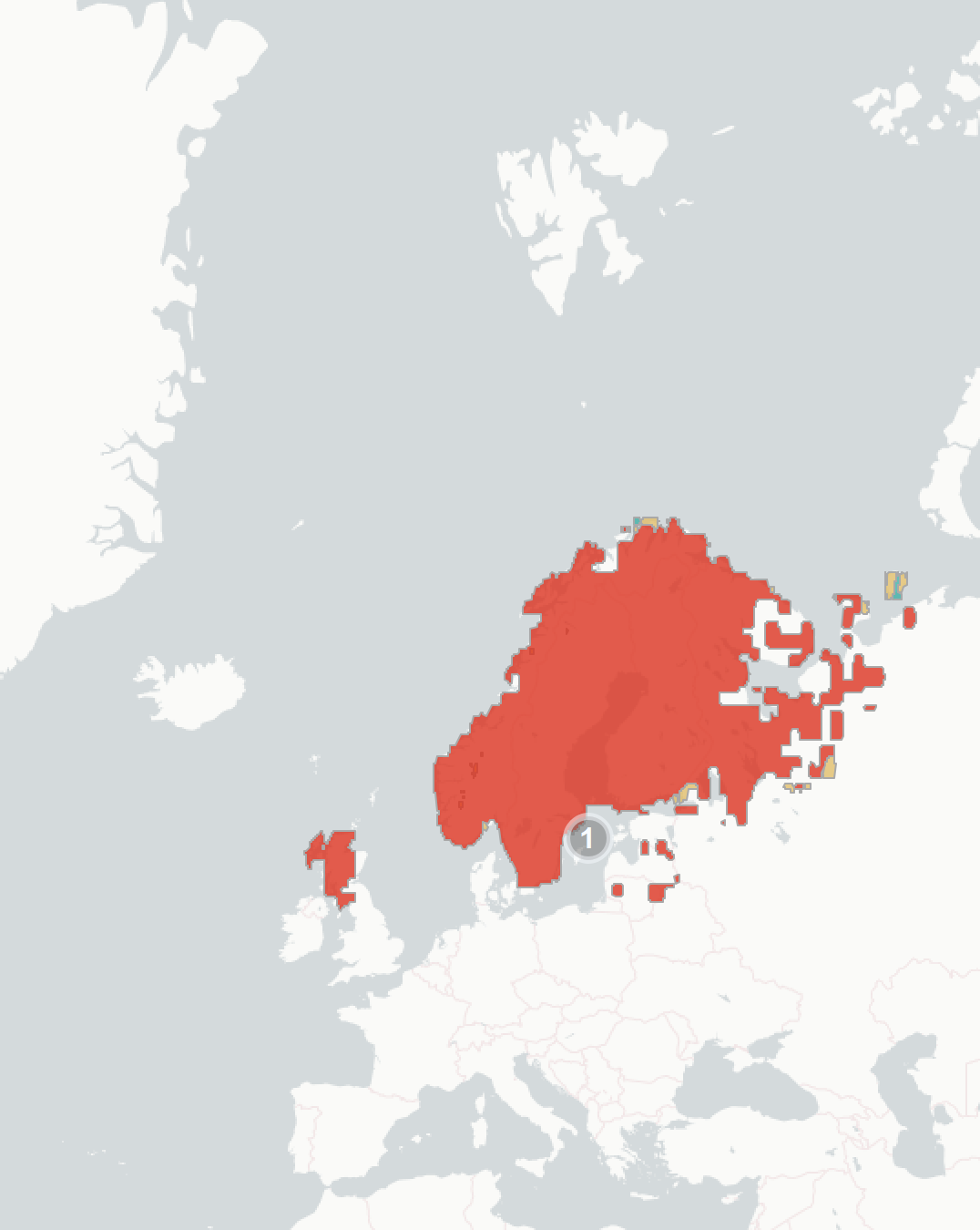Arctic Loon (Gavia arctica): vulnerability to climate change
Evidence for exposure
Potential changes in breeding habitat suitability:
-
Current breeding area that is likely to become less suitable (96% of current range)
-
Current breeding area that is likely to remain suitable (3%)
-
Current breeding area that is likely to become more suitable (1%)
Current impacts to Arctic Loons attributed to climate change:
-
No impacts have been documented for this species in Europe
Predicted changes in key prey species:
-
Key prey species are likely to decline in abundance along the swedish Baltic coast
Sensitivity
-
Loons have a strong preference for breeding near nutrient-poor, very clear freshwater. Any increase in productivity of lakes driven by warming temperatures, especially algal growth, will likely impact many breeding sites.
-
Species is sensitive to many threats, including disturbance by forestry work and tourism, ship traffic, bycatch, windfarms and potentially tourism. Nest abandonment is common when disturbed. Conservation intervention may therefore be difficult.
-
Sensitive to flooding due to storms and increased wave action as loons tend to nest close to sea level in exposed areas. Any sea level rise or increase in wave action is likely to have significant impact on breeding populations.
Adaptive capacity
-
No relevant information could be identified.
